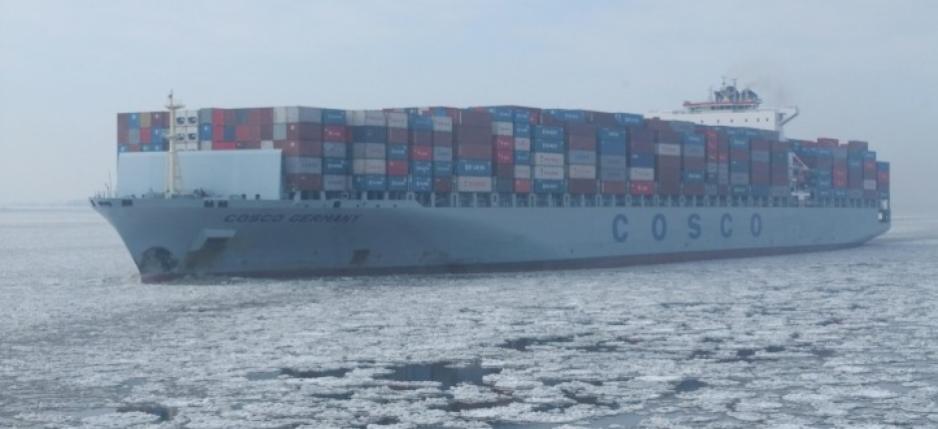Fait accompli; For Asians, Arctic shipping already a “reality”

As Western firms wait for Arctic shipping to show its worth, Asian countries are already betting on the emergence of an Arctic economic rim.
In the Asian version of the Arctic future, sea ice will continue to decline, the price of oil will rise and the volume of ships sailing on northern routes will grow.
“The opening of the Arctic to shipping is fait accompli. What remains is to make sure that it can be done safely and without damaging the environment,” says Chan-woo Kim, South Korea’s ambassador for Arctic affairs.
Mr Kim’s bullish outlook on Arctic shipping was typical of representatives from Asian countries during last week’s Arctic Circle, a major annual conference that attracts a significant number of high-profile attendees from outside the region.
SEE RELATED: The NSR of the South
Such enthusiasm stands in contrast to what had become a more muted discussion about the potential of the Northern Sea Route, north of Russia, and the Northwest Passages, through the Canadian Arctic, to provide cost-saving shortcuts for shippers and the potential economic boon they held for cities along them.
The volume of transit shipments – traffic not destined for an Arctic destination – on the Northern Sea Route, generally a bellwether of interest in Arctic shipping, stands at about 200,000 tones this year, according to the Northern Sea Route Information Office, a Norwegian outfit that works develop Arctic shipping. That is about five times the amount shipped last year, but more than a million tonnes below its 2012 peak.
The plunge in commodity prices has been one reason why. Another is the economics of shipping: with few large population centres, the region is not viable for container shippers, say economists. And while there is a distance advantage for ports in northern Asia, both routes remain significantly riskier than traditional routes.
Mr Kim, however, noted that the development of the Polar Code, a set of safety requirements that take effect on January 1, should serve as a signal that Arctic routes were now established alternates.
SEE RELATED: Editor’s Briefing | The slow boat comes in
Container shipping is unlikely to take hold right off the bat, but he expects it will follow once the volume of shipping to and from destinations in the region and international transits of bulk cargo begins to grow and infrastructure is built.
This process, Mr Kim believes, will be helped by future iterations of the Polar Code as well as improvements in communications and sea-ice prediction. But, as an economic prospect, he says Arctic shipping is hindered by a disproportionate volume of traffic heading east. “We still need that symmetry to change, but if it does, an Arctic economic rim will flourish.”
Mr Kim declined to speculate about how long such a development would take, given the variability of ice conditions. Others, including Natsuhiko Otsuka, a Japanese academic, suggest that 20 to 30 years is a reasonable time frame.
“Everything is based on how quickly ice recedes, but navigation is already much easier and no-one expects that this won’t continue,” Mr Otsuka says.
SEE RELATED: China: Respect, co-operation and win-win
Although he, too, made the case for shipping already being “a reality”, its growth, he reckons, had been hindered by the decline in oil prices. Should development of oil fields in the region pick up again, so will shipping.
“We can’t predict what will happen, but the price of oil only trends in one direction,” he says.
For now, Arctic shipping has received more attention from Asian shipping firms than from big Western shippers. This, say those in the industry, is partly due to geography and a larger volume of commodities being sailed towards Asia.
Another reason is a long-term outlook made possible by better co-ordination with authorities, particularly in the case of Cosco, a Chinese state-owned firm.
SEE RELATED: Japan: The paper chase
Cosco has been involved in gradually more ambitious efforts to sail and ship goods on the Northern Sea Route. In 2013, it sent its first bulk cargo ship, the Yongsheng, which is relatively well protected against damage from sea ice. This year, the Yongsheng and four other vessels, none of them with significant protection against ice, completed voyages on the Northern Sea Route.
Chinese ships have yet to begin using the Northwest Passages, but this may change: in April, Beijing published a 365-page handbook offering guidelines for navigating the waterway. Their faith that the route may become viable in the years to come may be tied to the 2014 voyage of the Nunavik, a Canadian vessel, which became one of the first cargo ships to sail the waterway unaided by an icebreaker when it sailed a load of nickel from eastern Canada to northern China.
Regardless of which path China chooses, Mr Otsuka expects that it will pioneer Arctic shipping, and that Korea and Japan will follow in its wake. Given the size of the Chinese economy, it would be a wide wake to fill, but one that appears to be well on its way towards opening up, according to Ding Nong, Cosco’s executive vice-president.
“Cosco,” Mr Ding said in a presentation delivered in Chinese and without interpretation, “is optimistic about the future of the Northern Sea Route and shipping in the Arctic.
”As China goes, so go Japan, Korea and, perhaps, the rest of the Arctic.
This Article was first published in The Arctic Journal.
